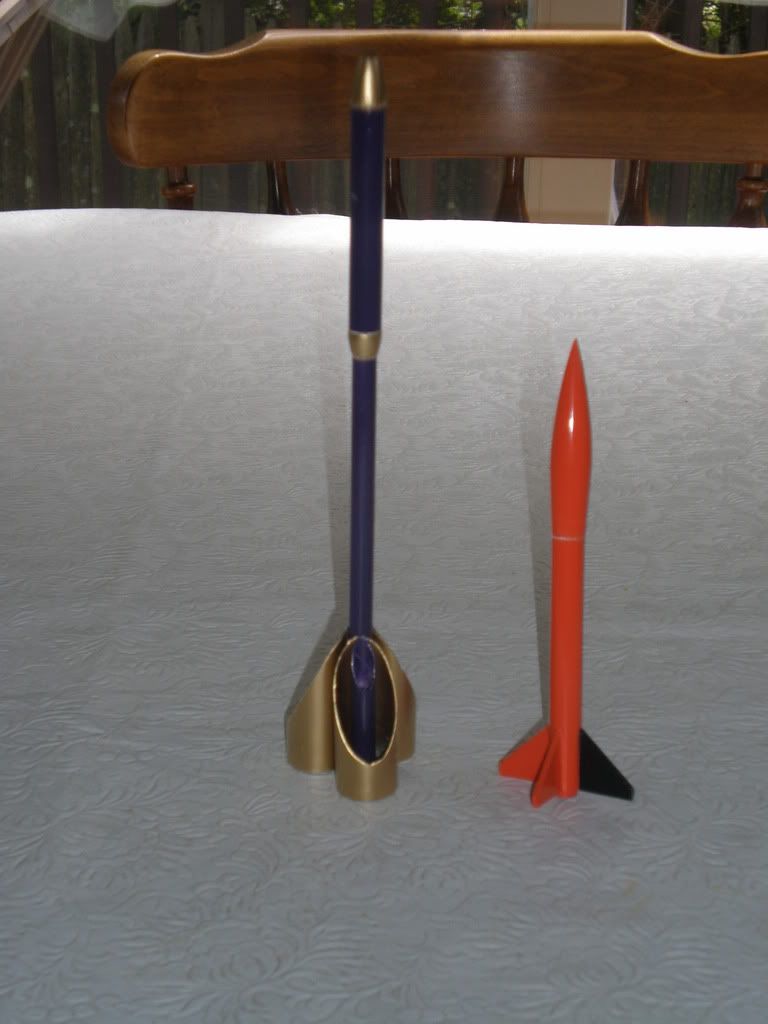blackjack2564
Crazy Jim's Gone Banana's
Well I must have been bitten by some kinda bug last night. Decided to take the leap over to the ''GRAY" side.
Gonna Go Micro.
It will be strange building a rocket the size of my avatar! Don't know how I'll get those stickers downsized that small!
Decided to share my lack of experience with ya'll, maybe some others might catch the bug too. Couple of questions for you pro's to help me out.
If I remember correct, it was advised on an old thread to get the Quest MMX combo deal for starters. This comes with a decent controller and pad to get me started? Any other recommendations or was this right?
I would assume the rockets are plastic and that's OK, figure I'll probably lose a couple right off the bat.
What would be a good starter rocket from Flis? I know I want that darn Little John, but don't want to lose it right off.
Am I going to be able to track these things ? [re: comment from Flis about losing one behind a blade of grass]
Is there a fin alignment guide that comes with them?
How in the heck is recovery attached when fingers are larger then the tubes!
I 'm sure I'll drive you nuts with more questions, once I get my stuff.
Totally fascinated by that micro-micro that used a launch lug for a body tube. What the heck do you use for a LL?
I probably have most of the required tools,but any little tips would be appreciated on some possible "special" ones.
Figuring since the Winternats are canceled, plenty of time to fool around with this, and there is a nice big park 2 blocks away.
And I will keep everyone up dated on my MMX experience as I travel over to the 'Gray' side. Kinda interesting to think I can carry everything in a small box, instead of loading up my truck, to go launch.
I just visited Quest's site. Are they actually charging Hazmat on micro motors? Man that would make shipping 35.00 on a 40.00 order!
Gonna Go Micro.
It will be strange building a rocket the size of my avatar! Don't know how I'll get those stickers downsized that small!
Decided to share my lack of experience with ya'll, maybe some others might catch the bug too. Couple of questions for you pro's to help me out.
If I remember correct, it was advised on an old thread to get the Quest MMX combo deal for starters. This comes with a decent controller and pad to get me started? Any other recommendations or was this right?
I would assume the rockets are plastic and that's OK, figure I'll probably lose a couple right off the bat.
What would be a good starter rocket from Flis? I know I want that darn Little John, but don't want to lose it right off.
Am I going to be able to track these things ? [re: comment from Flis about losing one behind a blade of grass]
Is there a fin alignment guide that comes with them?
How in the heck is recovery attached when fingers are larger then the tubes!
I 'm sure I'll drive you nuts with more questions, once I get my stuff.
Totally fascinated by that micro-micro that used a launch lug for a body tube. What the heck do you use for a LL?
I probably have most of the required tools,but any little tips would be appreciated on some possible "special" ones.
Figuring since the Winternats are canceled, plenty of time to fool around with this, and there is a nice big park 2 blocks away.
And I will keep everyone up dated on my MMX experience as I travel over to the 'Gray' side. Kinda interesting to think I can carry everything in a small box, instead of loading up my truck, to go launch.
I just visited Quest's site. Are they actually charging Hazmat on micro motors? Man that would make shipping 35.00 on a 40.00 order!
Last edited:



















